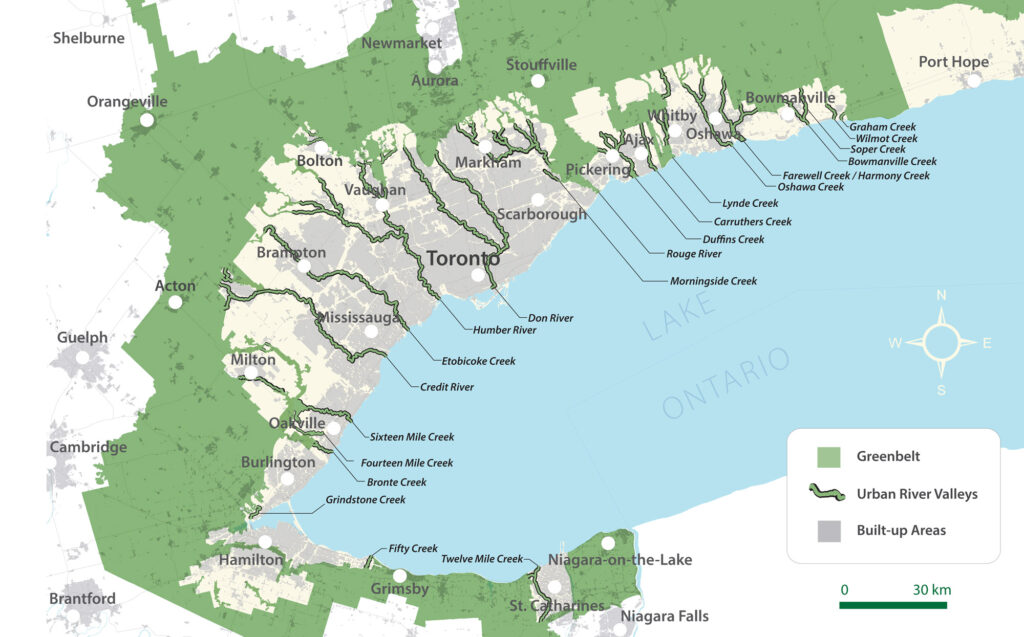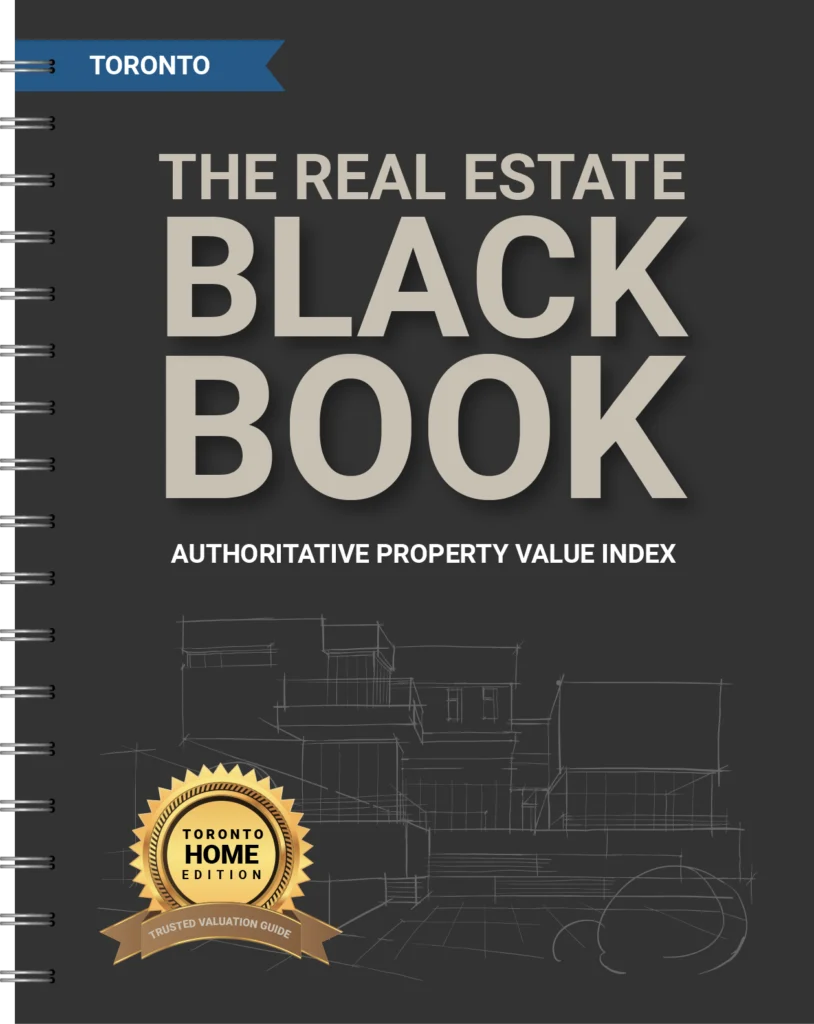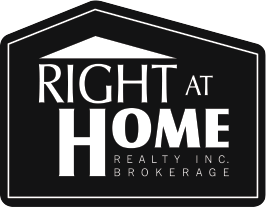Greenbelt sprawl in Toronto has long been a topic of conversation, particularly when it comes to managing urban sprawl and protecting valuable green spaces. In 2024, the interplay between Toronto’s Greenbelt and the expansion of urban areas is a critical factor that influences real estate dynamics across the region. As Toronto continues to grow, the pressure on available land and the resulting effects on the Greenbelt have become more apparent.
What is the Greenbelt and Why is it Important?
The Greenbelt, established in 2005, is a protected area of green space, farmland, forests, wetlands, and watersheds in Ontario, designed to limit urban sprawl and preserve natural environments. Spanning 2 million acres, it provides a critical barrier that restricts urban development from encroaching into sensitive ecosystems. The Greenbelt serves not only as a green “lung” for the Greater Toronto Area (GTA) but also as a vital agricultural and environmental asset.
The concept of the Greenbelt is to maintain a balance between nature and urbanization. By limiting urban sprawl, it ensures that cities develop in a more sustainable and efficient manner, encouraging density and limiting unchecked expansion.
The Impact of Urban Sprawl on the Greenbelt in 2024
In 2024, urban sprawl remains a key challenge for Toronto, particularly as demand for housing continues to grow. As the population expands, the need for new residential, commercial, and industrial spaces intensifies, often leading to the temptation to push development boundaries further into protected areas. Despite policies in place to protect the Greenbelt, there has been ongoing debate over expanding urban boundaries, with developers and policymakers frequently at odds.
Pressures Leading to Greenbelt Sprawl
Several factors contribute to the pressure on the Greenbelt and the expansion of urban sprawl in Toronto:
- Population Growth: Toronto’s population has been on a steady rise, resulting in increased demand for housing and infrastructure. This growth often leads to the encroachment on areas close to the Greenbelt as developers seek new land to accommodate the expanding population.
- Affordability Concerns: Housing affordability has been a persistent issue in Toronto. As central areas become increasingly expensive, developers and homebuyers look towards the outskirts for more affordable options, which puts pressure on the Greenbelt boundaries.
- Infrastructure Expansion: The development of new highways and transit routes also plays a role in urban sprawl. Improved infrastructure makes it easier for people to live farther from the city core, which in turn increases demand for suburban development near the Greenbelt.
- Political Influence: Changes in government policies and priorities can also impact the Greenbelt. In recent years, there have been proposals to open parts of the Greenbelt for development, sparking significant debate among stakeholders.
Greenbelt Sprawl Effects on the Real Estate Market
The interplay between the Greenbelt and urban sprawl has a notable impact on Toronto’s real estate market in 2024. Here are some key effects:
- Limited Land Supply: With the Greenbelt restricting the availability of land for development, the supply of new housing is limited. This scarcity contributes to higher property prices, particularly in areas close to the Greenbelt where demand remains strong.
- Increased Urban Density: To counter the lack of horizontal expansion, developers are focusing on vertical growth. High-rise residential and mixed-use developments have become more common as a way to accommodate the growing population without encroaching on the Greenbelt.
- Suburban Growth: Areas just outside the Greenbelt have seen increased demand, as they provide a compromise between urban living and affordability. These suburban regions are becoming more attractive to families and individuals seeking more space at a lower cost compared to central Toronto.
- Environmental Concerns: The encroachment on the Greenbelt has significant environmental implications, including loss of habitats and increased pollution. These concerns have led to greater advocacy for protecting green spaces, which in turn influences planning policies and real estate development regulations.
The Future of Greenbelt Sprawl and Real Estate in Toronto
Looking ahead, the relationship between the Greenbelt and urban sprawl will continue to shape Toronto’s real estate landscape. The challenge lies in finding a balance between accommodating growth and preserving natural spaces. Several potential strategies could help mitigate the impact of sprawl on the Greenbelt:
- Promoting Urban Intensification: Encouraging development within existing urban areas, such as building up rather than out, can reduce the pressure on the Greenbelt. Policies that incentivize high-density developments and mixed-use buildings can help accommodate population growth without expanding urban boundaries.
- Transit-Oriented Development: Expanding public transit and encouraging development around transit hubs can help reduce the need for car-dependent suburban sprawl. Transit-oriented development can create vibrant communities that are less reliant on expanding into Greenbelt areas.
- Stronger Policy Enforcement: Ensuring that policies protecting the Greenbelt are strictly enforced is crucial. This includes preventing unauthorized development and ensuring that any changes to the Greenbelt boundaries are made transparently and with public input.
- Affordable Housing Initiatives: Addressing housing affordability within the city can also reduce the pressure to develop near the Greenbelt. By creating more affordable housing options in central areas, the demand for sprawling suburban developments can be lessened.
Conclusion: Balancing Growth and Preservation
The impact of Greenbelt sprawl on Toronto’s real estate market in 2024 is significant, as the city faces the challenge of accommodating growth while protecting its natural environment. The Greenbelt plays a vital role in maintaining ecological balance, and the pressures of urban sprawl need to be managed carefully to ensure sustainable development.
Moving forward, it is essential for policymakers, developers, and communities to work together to find solutions that allow Toronto to grow without sacrificing its green spaces. By focusing on urban intensification, transit-oriented development, and strict policy enforcement, Toronto can navigate the challenges of urban sprawl while maintaining the integrity of its Greenbelt.
The future of Toronto’s real estate depends on the ability to strike this delicate balance – one that meets the needs of a growing population while safeguarding the natural assets that make the city and its surroundings a livable and vibrant place.



